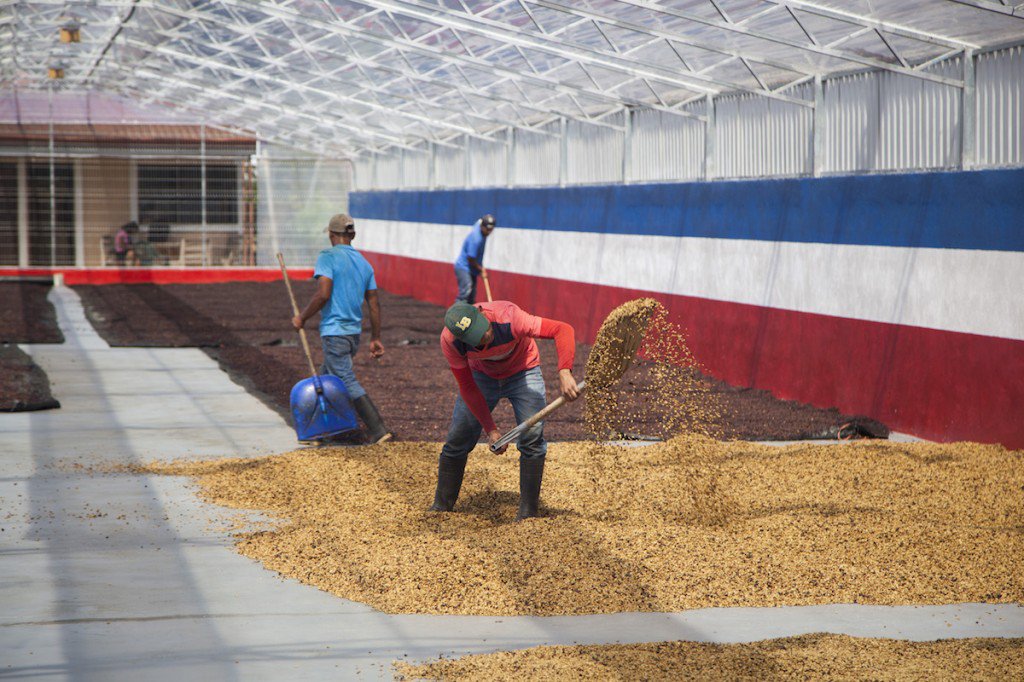
The Sweet Secret of Honey Coffee: Processing and Flavor Transformations
Introduction
In the world of coffee, there's more to explore beyond the traditional washed and natural processing methods. One such method that's been gaining popularity in recent years is the "honey coffee" process. This unique approach to coffee processing imparts distinct flavors and aromas to the beans, making it an exciting choice for coffee connoisseurs. In this blog post, we'll take you through the intricate steps of the honey coffee process and its profound effects on the coffee's flavor profile.

Step 1: Selecting Ripe Coffee Cherries
Just like with other coffee processing methods, the journey begins with skilled harvesters carefully selecting only the ripest coffee cherries. The selection of ripe cherries is critical as it ensures the coffee beans are at their peak flavor potential.
Step 2: Depulping
Once harvested, the cherries are transported to the processing facility. In the honey coffee process, the cherries are depulped, similar to the washed process. However, in honey coffee, a significant portion of the mucilage, the sticky layer covering the beans, is intentionally left intact.
Step 3: Drying
This is where the honey coffee process gets its name. After depulping, the coffee beans, still covered in a layer of sticky mucilage, are spread out to dry in the sun. During this drying process, the beans take on a sticky, honey-like appearance. This layer of mucilage serves as a protective shield, preserving some of the fruit's sweetness and imparting unique flavors to the beans.

Step 4: Turning and Sorting
Throughout the drying process, the beans are regularly turned to ensure even drying and to prevent the growth of mold or over-fermentation. This requires constant monitoring and skilled labor. The beans are also sorted to remove any defects or unwanted materials.
Effects on Coffee Flavors:
1. Sweetness:
The honey coffee process is known for enhancing the sweetness of the coffee. The sticky mucilage layer left on the beans contributes sugars that caramelize during drying, resulting in a naturally sweet and syrupy quality in the cup.
2. Complexity:
Honey-processed coffees often boast a complex flavor profile. The combination of the mucilage's sweetness and the beans' contact with the sun during drying creates an intricate range of flavors that can include fruity, floral, and even nutty notes.
3. Body:
Honey coffee typically has a fuller body compared to washed coffees. The residual sugars from the mucilage contribute to a creamy and luscious mouthfeel, making it a favorite among those who appreciate a rich and textured coffee.
4. Variability:
Honey-processed coffees can exhibit a wide range of flavors, depending on factors like the type of honey processing (yellow, red, or black honey) and the local climate conditions. This variability adds an element of excitement and exploration for coffee enthusiasts.

Conclusion
The honey coffee process is a captivating journey that results in coffee beans with a unique sweetness and complexity. From the careful selection of ripe cherries to the meticulous drying process, each step contributes to the coffee's flavor and aroma profile. Whether you're sipping a red honey-processed Costa Rican coffee with its vibrant fruitiness or a black honey-processed Nicaraguan coffee with its deep sweetness, honey coffee invites you to experience coffee in a new, exciting way. It's a testament to the ingenuity and craftsmanship of coffee producers who continue to push the boundaries of flavor possibilities in the world of coffee.





